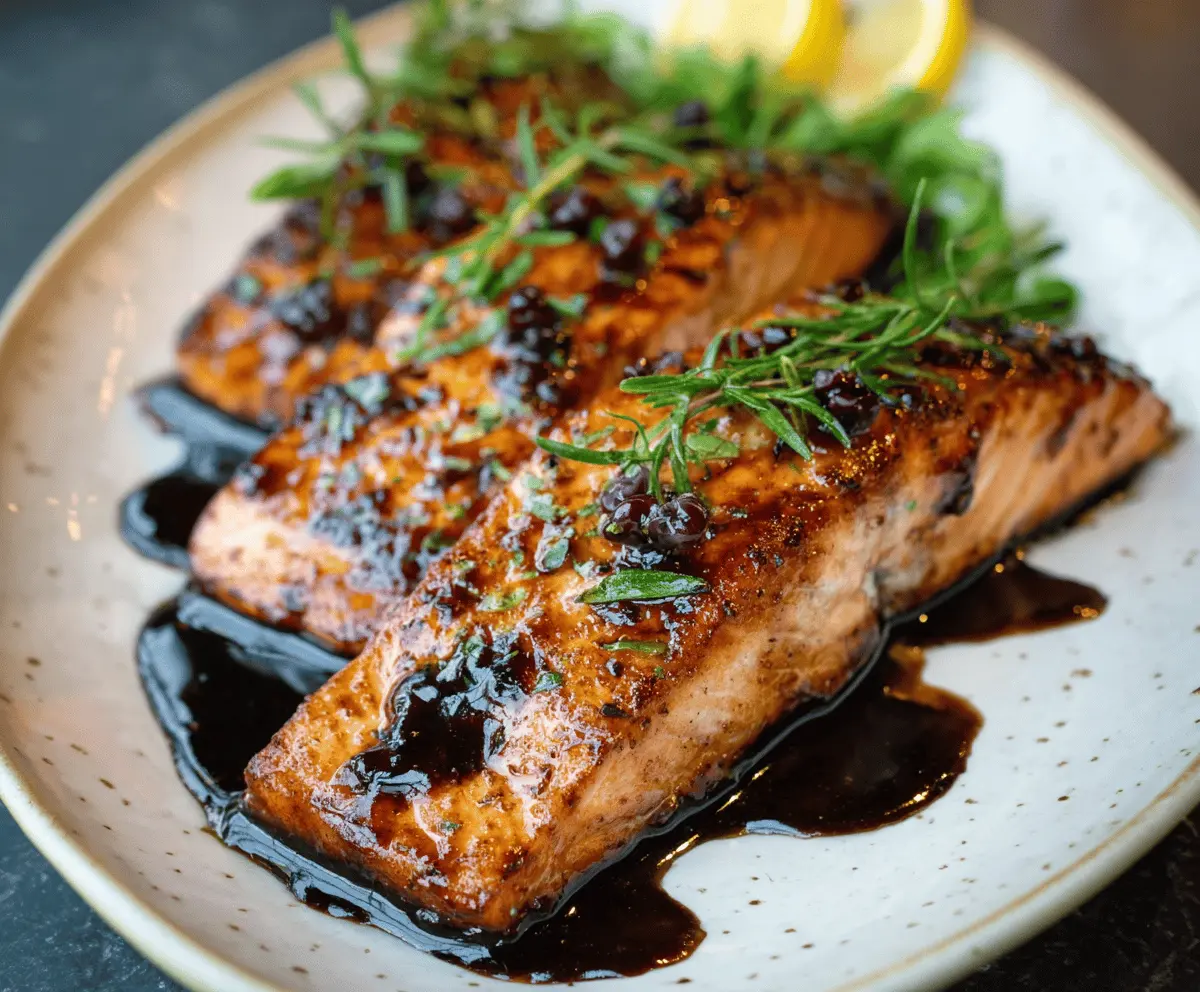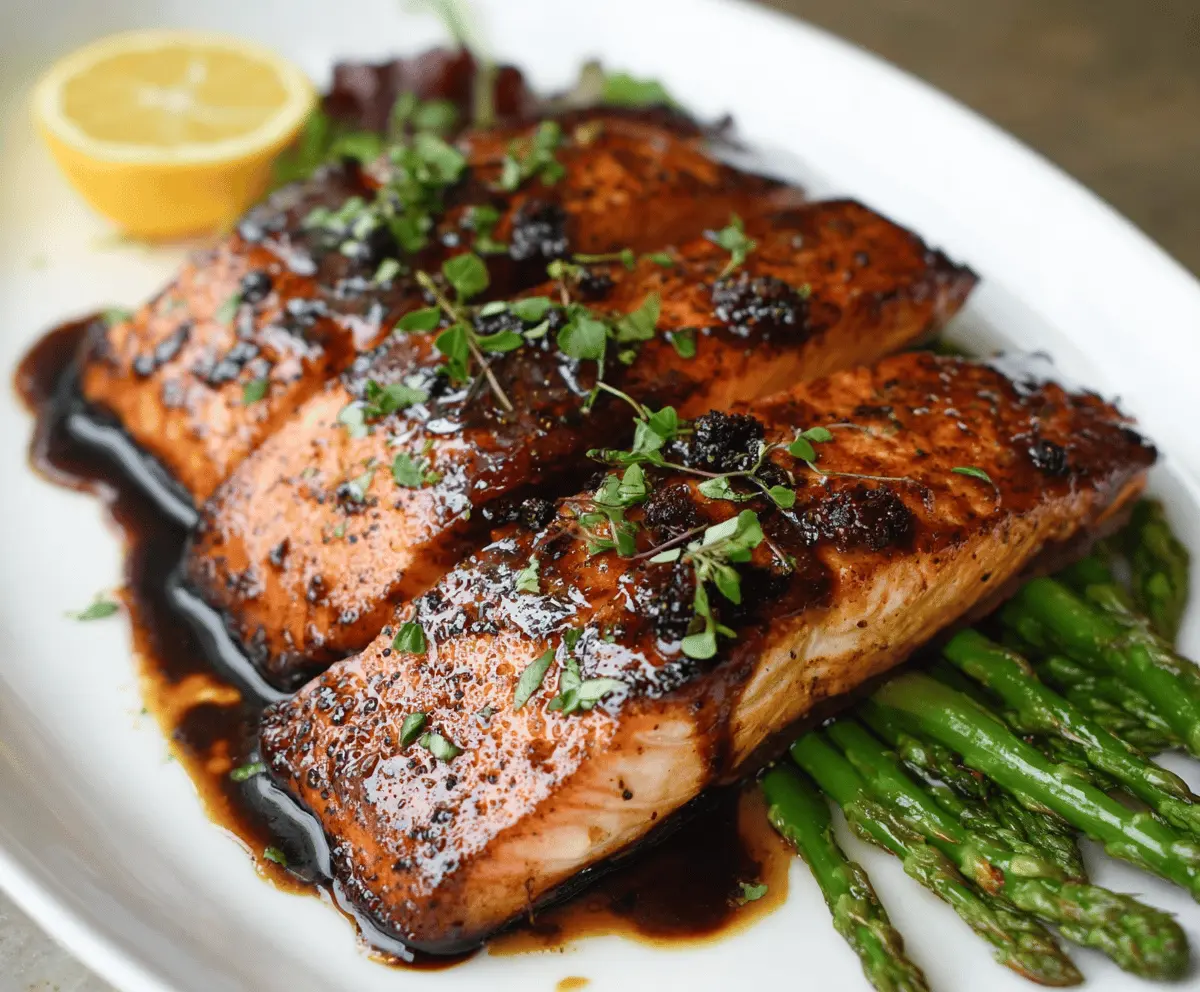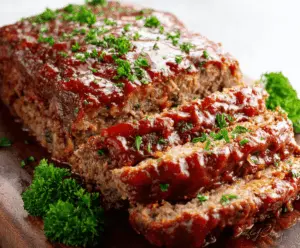This Balsamic Glazed Salmon is a real treat! The salmon is tender and flaky, coated with a sweet and tangy glaze that makes it super tasty. Plus, it cooks up quickly!
Whenever I make this dish, I feel like a gourmet chef! It’s not only simple to prepare but also makes my kitchen smell amazing. I love to serve it with a side of veggies or rice! 😋
Key Ingredients & Substitutions
Salmon: Fresh salmon fillets are the star of this dish. If you can’t find fresh salmon, use frozen fillets—just make sure to thaw them completely before cooking. I often choose wild-caught salmon for its great flavor.
Balsamic Vinegar: This is crucial for the glaze! If you’re out, a red wine vinegar mixed with a bit of sugar can work in a pinch. I prefer using high-quality balsamic for a richer taste.
Honey/Brown Sugar: Both add sweetness to balance the vinegar’s acidity. You can swap honey with maple syrup or agave for a vegan option. I personally enjoy brown sugar for that deep flavor it adds.
Garlic: Fresh garlic gives the best flavor. If you don’t have fresh, garlic powder can be a substitute—use about 1/4 teaspoon for every clove.
Asparagus: This is optional but a great side. If asparagus isn’t available, feel free to use green beans or broccoli instead!
How Do You Ensure Perfectly Cooked Salmon?
Cooking salmon can be tricky. To get it just right, focus on a few key steps:
- Always start with a hot pan to get that nice sear without sticking.
- Let it cook undisturbed for the first 4 minutes. This helps create a crispy surface.
- After flipping, reduce the heat to medium-low. This helps cook the salmon through without drying it out.
- Watch for that perfect cottony flake when you poke it with a fork. If it flakes easily, it’s done!
Remember, salmon continues to cook even after you take it off the heat, so it’s okay if it’s a little translucent in the center!

Balsamic Glazed Salmon Recipe
Ingredients You’ll Need:
- 3 salmon fillets (about 6 ounces each), skin removed
- Salt and freshly ground black pepper, to taste
- 2 tablespoons olive oil
- 1/4 cup balsamic vinegar
- 2 tablespoons honey or brown sugar
- 2 cloves garlic, minced
- 1 teaspoon Dijon mustard (optional)
- Fresh thyme or parsley, for garnish
- 1 lemon, halved (for serving)
- 1 bunch asparagus, trimmed (optional side)
How Much Time Will You Need?
This delicious meal takes about 10 minutes of prep time and about 10-15 minutes of cooking time. So, you can have it ready in around 25-30 minutes! Perfect for a quick weeknight dinner or an impressive meal for guests.
Step-by-Step Instructions:
1. Prepare the Salmon:
Start by patting the salmon fillets dry using paper towels. This is important for getting a nice crispy exterior. Then, season both sides of the fillets generously with salt and freshly ground black pepper. You want to make sure they’re well-seasoned!
2. Make the Balsamic Glaze:
In a small bowl, whisk together the balsamic vinegar, honey (or brown sugar), minced garlic, and Dijon mustard (if using) until the mixture is smooth and well combined. Set this mixture aside for the next step.
3. Cook the Salmon:
Heat the olive oil in a large skillet over medium-high heat. When the oil is hot, carefully add the salmon fillets to the pan. Let them cook for about 4 minutes without moving them. This will help achieve a beautifully browned crust.
4. Add the Glaze:
After 4 minutes, gently flip the salmon fillets over. Reduce the heat to medium-low and pour the balsamic glaze over the top of the salmon. Spoon the glaze continuously over the fish as it cooks to help thickening. Cook for an additional 3-5 minutes, or until the salmon is cooked through and the glaze is sticky and caramelized.
5. Cook the Asparagus (Optional):
If you’re serving asparagus as a side, you can sauté it in the same skillet after removing the salmon, or use a separate pan. Just toss the asparagus with a bit of olive oil, salt, and pepper, and cook until tender-crisp—about 4-5 minutes.
6. Serve:
Transfer the glazed salmon to a serving plate. Garnish with fresh thyme or parsley, and if you have any glaze left in the pan, drizzle it over the top. Serve immediately with the sautéed asparagus and lemon halves for squeezing over the salmon. Enjoy your delicious, sweet, and tangy Balsamic Glazed Salmon!
Can I Use Frozen Salmon for This Recipe?
Yes, you can! Just make sure to fully thaw the frozen salmon in the refrigerator overnight or place it in a sealed bag and submerge it in cold water. Pat it dry before cooking to ensure a nice sear.
What If I Don’t Have Balsamic Vinegar?
No problem! If you don’t have balsamic vinegar, you can substitute it with red wine vinegar mixed with a little sugar or honey to mimic the sweetness and tanginess of balsamic. About 1/4 cup of red wine vinegar with 1 tablespoon of sugar works well!
How Can I Make This Dish Lower in Sugar?
If you want to cut back on sugar, you can simply reduce the amount of honey or brown sugar in the glaze by half. Alternatively, use a sugar substitute like stevia or erythritol, adjusting to taste.
What’s the Best Way to Store Leftovers?
Store any leftover salmon in an airtight container in the refrigerator for up to 3 days. To reheat, gently warm it in the oven at low heat or microwave it in short intervals to prevent it from drying out.



